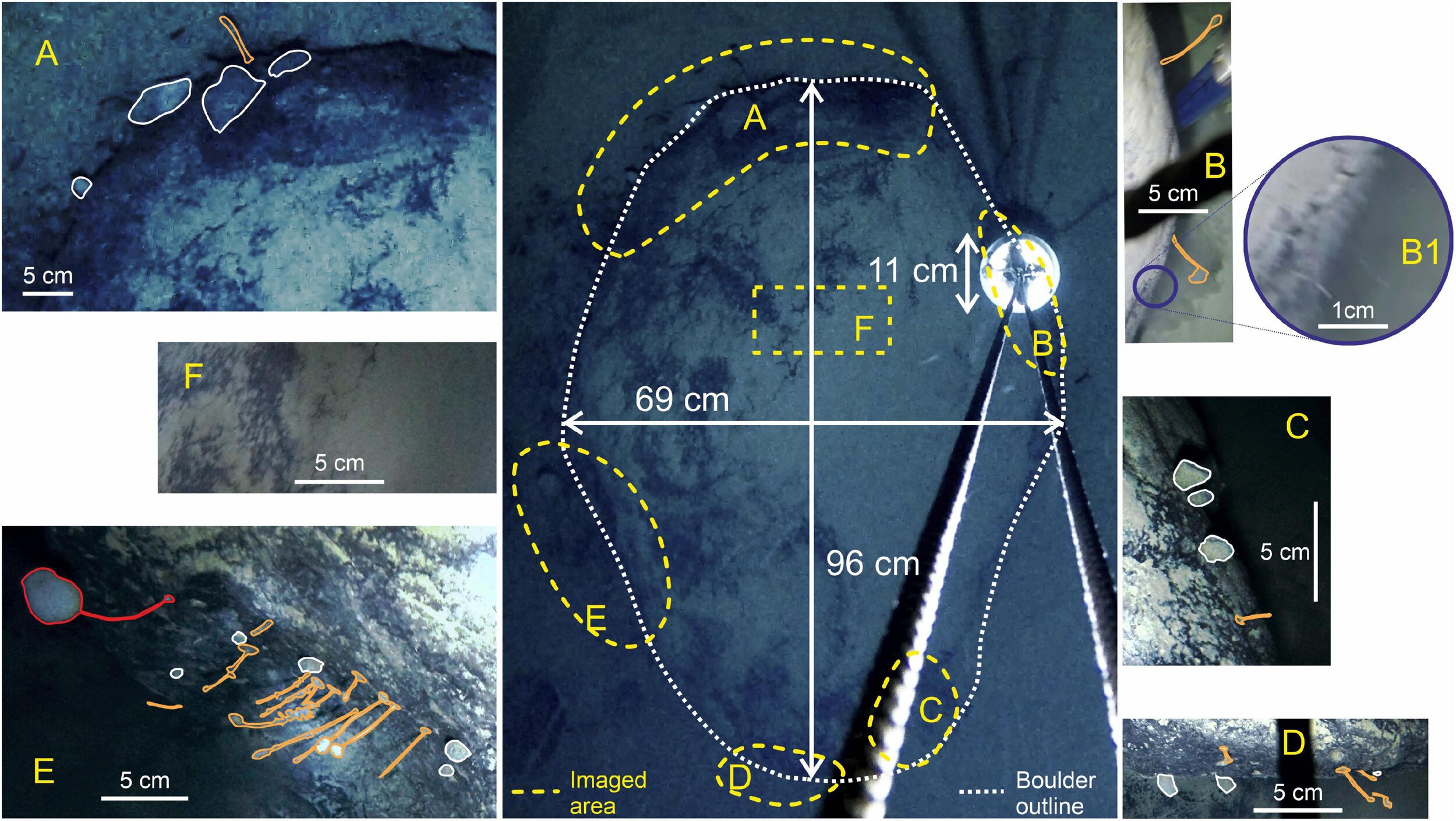British Antarctic Survey team members gathering ice cores despaired as their drill bit struck a boulder, half a mile through the Filchner-Ronne Ice Shelf on the frozen southern continent. Dropping a camera down into utter blackness, in near-freezing water temperatures, they looked through the feed and saw that the boulder contained a rich quantity of marine life.
16 sponges and 20 other unidentified creatures clung to the rock, in seemingly unlivable conditions.
“The discovery of an established community consisting of […] filter feeding organisms (sponges and other taxa,) on a boulder 260 km from the ice front raises significant questions, especially when the local currents suggest that this community is somewhere between 625 km and 1500 km in the direction of water flow from the nearest region of photosynthesis,” write the authors in the corresponding paper, noting the importance of their discovery.
The plankton beyond the edges of the ice shelves grow to enormous proportions during Antarctic summer, and are able to sustain some of the largest gatherings of whales on Earth. Yet as the authors write, the benthic community they discovered was hundreds, if not more than a thousand kilometers from the nearest area where this has been recorded to occur, further complicating questions like how the boulder community finds food.
700 kilometers towards the continent from the edge of the gargantuan ice shelves resting on top of the Southern Ocean, was the record for discovery of under-shelf sea life, which the authors explain is like going to the depths of the Mariana Trench and back to the surface 32 times.
Not so far from the edge of the ice shelf, the boulder and its new sea life were nevertheless extremely far, as written above, from the nearest region of photosynthesis. This led to some interesting explanations of the life and times of this unique stalked-sponge community.
Sponges can theoretically live thousands of years, but the issue of nutrients is difficult, since the boulder the community called home showed little evidence of sedimentation accumulation, and the location was subjected to a strong current.
“If this is indeed an endemic and specialized community, for long-term survival it could “island hop” between dropstones, like hydrothermal vent communities between active vents, or between whale falls,” they hypothesize.
The discovery of this community highlights that when you’ve conducted explorations amounting to the space of a tennis court, in an area about the size of Mongolia, there are going to be a lot of surprises. WaL
PICTURED ABOVE: Dimensions and close-ups of the boulder, highlighting where life is clearly visible. PC: Anker et al. British Antarctic Survey.
If you think the stories you’ve just read were worth a few dollars, consider donating here to our modest $500-a-year administration costs.



